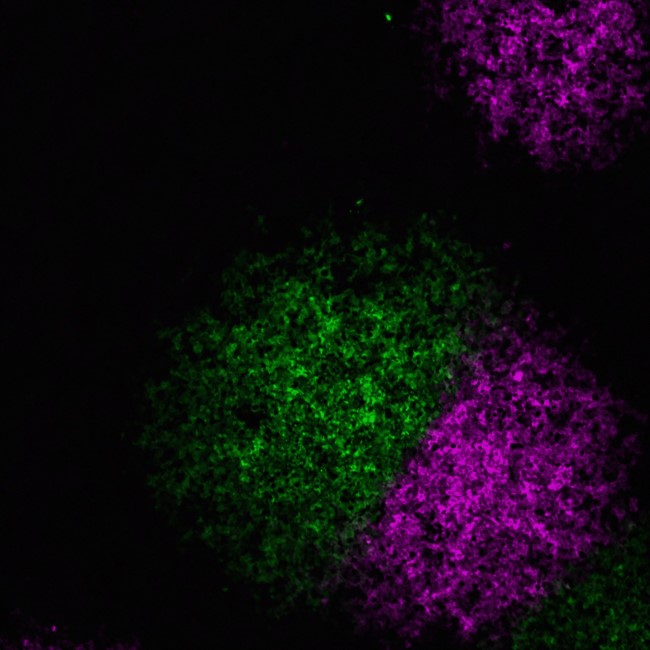The secret world of Influenza A infections
Published: 9 February 2023
Scientists at the MRC-University of Glasgow Centre for Virus Research have revealed more about the hidden world of respiratory viral infection
This winter many of us will experience the symptoms caused by colds and flu. Coughs, sneezes, sore throats and fevers are all caused by unwelcome viral visitors who temporarily setup home in our respiratory systems. But what’s really happening inside our bodies as viruses fight to overpower our immune systems – and each other – in a bid to succeed?
Now, scientists at the MRC-University of Glasgow Centre for Virus Research (CVR) have revealed more about the hidden world of respiratory viral infection. Their new research, published in PLOS Biology, highlights the secret viral dramas going on inside our throats and lungs.

In this new study, researchers show how one of the most common and potentially serious winter viruses – the influenza A virus – creates and defends microscopic territories inside its host. Images from the study show that if you do pick up an influenza infection this winter, your airways will become a patchwork of tiny territories. And while within each territory viruses will be co-operating to further infect you, between each territory they will be fighting with each other for survival.
Viruses replicate by entering cells and taking over their normal functions. Many viruses have evolved ways to block access to a cell after entering it, preventing any other viruses of the same type from getting in and competing for the cell's resources. However, it takes a virus time after invading a cell to set up the necessary barriers to stop additional viruses entering, and researchers were keen to understand what happens before this crucial point.
Using viruses engineered to produce fluorescent proteins in one of two different colours, scientists were able to track which viruses were able to get into cells – and which were not – both in cell cultures and in infected mice. The study was able to show that this small defence delay means that, as viruses spread from one cell to the next, they divide their host up into separate microscopic territories.
Researchers found that influenza viruses spilling out of a single infected cell can enter the cell’s neighbours together, before any barriers go up, allowing them to help each other out when infecting any further new cells. Conversely, viruses spreading into that region from elsewhere in the host will only reach the infected cells once barriers have been put in place, and so cannot enter and compete with the viruses that are already there.
The researchers say this work will be important for studying how potential future pandemic flu viruses are created and, potentially, how to improve protection against influenza.
Anna Sims from the CVR, who led the study, said: “This study came from seeing something unexpected down the microscope and looking to find out more. We had previously been using fluorescent viruses in a very standard experiment, but when we looked, we could also see signs that they were fighting.
“The idea that viruses can establish territories in their hosts is incredible to see because, in biology, we observe the establishment and defence of territories in many areas, from ants, to trees, to cancer. We now believe that viruses are doing exactly the same thing in humans, but at a microscopic level.”
Dr Ed Hutchinson, senior author on the study, also from the CVR, said: “The virus patchwork Anna identified arises from a simple property of the timing of virus replication. This means that it probably applies to many different viruses that spread within their hosts. In the case of influenza, we know that new pandemic strains of influenza appear when different influenza viruses get into a host separately, replicate, and then come together to make a new virus as they spread within their host’s airway. The work done in this study shows that it is a lot harder than we had thought for influenza viruses to pull this off. This knowledge can now be used to find out what factors help pandemic viruses to overcome these barriers.”
The study, ‘Superinfection exclusion creates spatially distinct influenza virus populations’ is published in PLOS Biology. The work was funded by the Medical Research Council (MRC).
Enquiries: ali.howard@glasgow.ac.uk or elizabeth.mcmeekin@glasgow.ac.uk / 0141 330 6557 or 0141 330 4831
First published: 9 February 2023
<< February

